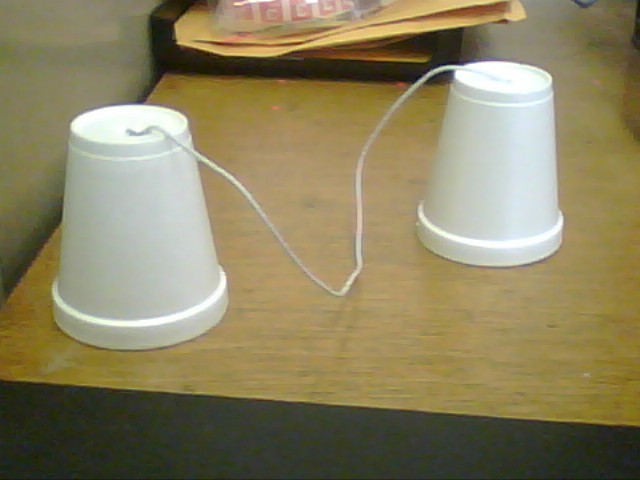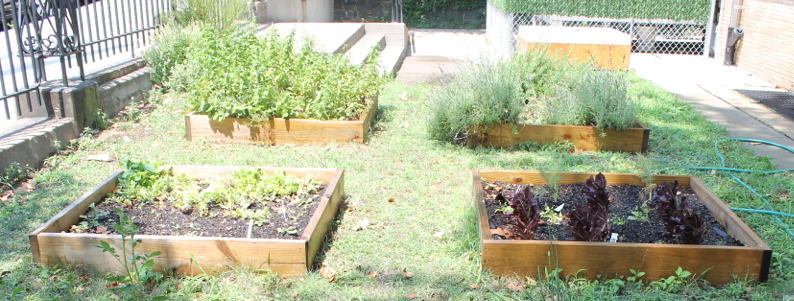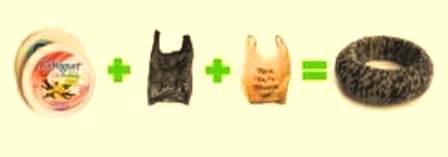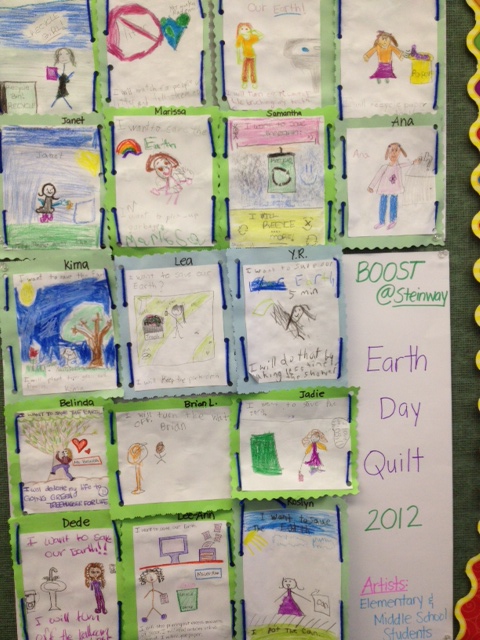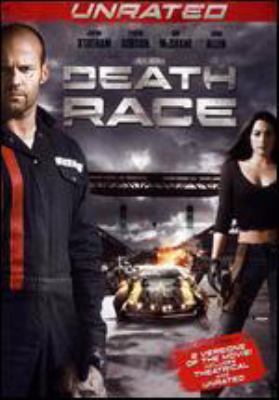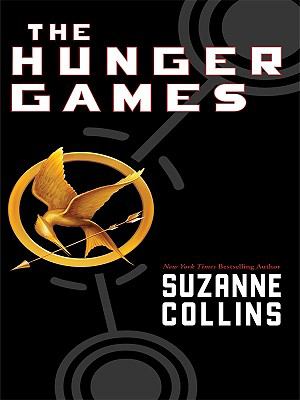Children at The Woodside library created their very own eco-friendly envelopes. Using old magazines and NYC transit maps, glue, scissors, and a sticky label, the children made envelopes of various colors and sizes. The children used sample cut outs as guides,which resulted in a fun and easy activity. Every envelope had a personal touch to it. Even parents started to join in once they saw how nice the envelopes turned out. If there is interest in learning how to make envelops simply leave a comment under this post and a member of our team will contact you.
Astoria Library holds a weekly Summer Reading Program; children from the age 5 and up are welcome to join. (The summer reading program requires you to sign up with Mrs. Sofia, so we may would be able to know what reading level you’re at). Books are picked out according to reading level, while the children are assigned to a group according to their reading level. One of the books read was The Imaginary Garden by Andrew Larsen, (donated by the Read & Seed Club). The children read a book about how an imaginary garden came to be with just Theo’s love and the help of Poppa. The children later on answered a questionnaire, so we know that they not only just read, but they are able to apprehend what they read.
Tags
Erik’s Reptile Edventure came to Steinway library this week and put on an amazing interactive performance for the kids. Erik, the Reptile Ranger, came in with different creatures including: two different kinds of snakes, toads, a snapping turtle, a lizard and even an endangered alligator! The kids loved being able to learn about these different types of critters AND being able to touch some of them. One brave girl, had the opportunity to feed the alligator a dead mouse! This program was definitely enjoyed by all and we can’t wait for Erik and his reptiles to visit us again!
On Friday June 15th, Stephanie Huffaker visited the Woodside Library to show us all how to make her wonderful and eco friendly bracelets. This fun craft included regular bangles, tape, a needle, clear thread, Plastic bags of various colors and LOTS OF PATIENCE! Not only were the bracelets beautiful but they projected a conscious effort in helping to make our world a greener place. Are you aware that plastic bags take approximately 20 to 1000 years to breakdown? They simply sit in landfills or end up killing over 100,000 birds, whales, seals and turtles. It’s our job as consumers to ensure that this doesn't continue. Simply reuse your bags, by turning it into something as simple and fun as a bracelet!
Tags
Worldwide economic collapse, totalitarian U.S. government and televised gladiatorial killing are not new to The Hunger Games. Now with that film’s enormous success, chances are good that we will be seeing many more futuristic, blood-sport-centric films hitting the cinemas in the coming years. Until then, there are DVDs available at Queens Library with the same general plot lines and social commentary that will keep the fire alive as you await the anticipated sequels of The Hunger Games.
Set in the year 2012, Death Race is a sequel/re-make of the 1975 movie Death Race 2000. In this story’s version of the near future, American society has collapsed, unemployment and crime have sky-rocketed, and prisons are run for profit. Much of the profits come from marketing “the Death Race,” where prisoners are offered a chance of freedom if they manage to survive five brutally sadistic car races. The character that brings the films together is called “Frankenstein” and is played by several different actors wearing the same mask. Where the original film was satirical and campy fun, the second film just manages to be fast and furious. The car chases make the movie worthwhile, but the pointed commentary of reality TV gone amuck ironically just gets lost in the action. A more recent “prequel,” Death Race 2, was released direct-to-DVD last year. This third film is for completionists only and will really strain your brain as you try to figure out how a movie set in 2012 can be a prequel to a movie set in 2000.
In 1987, when Arnold Schwarzenegger was box office gold, Tristar Pictures released The Running Man with Schwarzenegger as the star. The set-up is familiar — only this time the year is 2019 and prisoners have to outwit and outlast “stalkers” who hunt them down while they try to make it through the game zone to the finish line. Similar to The Hunger Games, there is a smarmy TV game show host (played brilliantly by a real life TV game show host — Richard Dawson, of Family Feud) and an underground resistance movement. The Running Man is a popcorn movie, an entertaining diversion from our own reality that may be a little too close for comfort to current events. However, that is ultimately the point of these dystopian fictions — projecting our current fears on to a future where the results of our present inaction might just be the death of society as we know it.
Tags
It seems like we get books like this in regular intervals — Lord of the Flies, Battle Royale, and now The Hunger Games by Suzanne Collins — books that make us examine the prospects for the future of humanity and the good and bad of our very real present day society. With the movie version of The Hunger Games opening this week, on March 23, there’s been a frenzy to read (or reread) the books of this trilogy, and despite it being marketed as a YA book, these are very good reads for readers of all ages. Panem is a future version of North America that exists after some vaguely described wars that, while important to the lore, do not require detail in order to be significant in placing things. Seventy-four years before the story begins, a civil war occurred in which one of the districts of Panem tried to rise up against the Capitol. In the years since, two youths are culled from each of the remaining 12 districts and forced to participate in The Hunger Games, a fight to the death in which only one can emerge the victor. Katniss Everdeen is a poacher in the Coal Mining District, District 12. Of course, the district is so poor that to the people living there, illegal hunting and trading is necessary to survive. When the time to pick tributes comes around, Katniss’s younger sister Primrose’s name is picked, and Katniss steps up to take her place in the games. The main thrust of the novel is the juxtaposition of life in the districts and in the Capitol, with those who barely have enough to get by compared with those who have everything they need and more; those who are giving their lives and those who are watching for entertainment. It’s difficult to read these books without finding yourself offended at some point or another, and that’s what makes reading them so great. In fact, finding offense is the point. The book can very easily be read as a criticism of consumer society, a critique of people who are willing to give up their liberties when those in power demand it for a temporary and false sense of security, as the characters in Battle Royale did. It can remark on how easily we are willing to give up our humanity just to survive, as the characters in The Lord of the Flies did. However, I personally see it foremost as a deconstruction of what it means to be a hero. Katniss is not the usual idolized version of a hero that tends to pop up in books like these. She’s not fighting for change. She’s not trying to keep the peace. She’s merely out to survive. She lies, she backstabs, she plays dirty … but, when it really counts, her honesty, hope, and humanity shine through. And in the second and third book … Well, you’ll just have to read the series, won’t you? Though currently in high demand, all of the books from The Hunger Games series are available at Queens Library. Are you looking forward to the movie? Share your review of the books or the movie in a comment!
